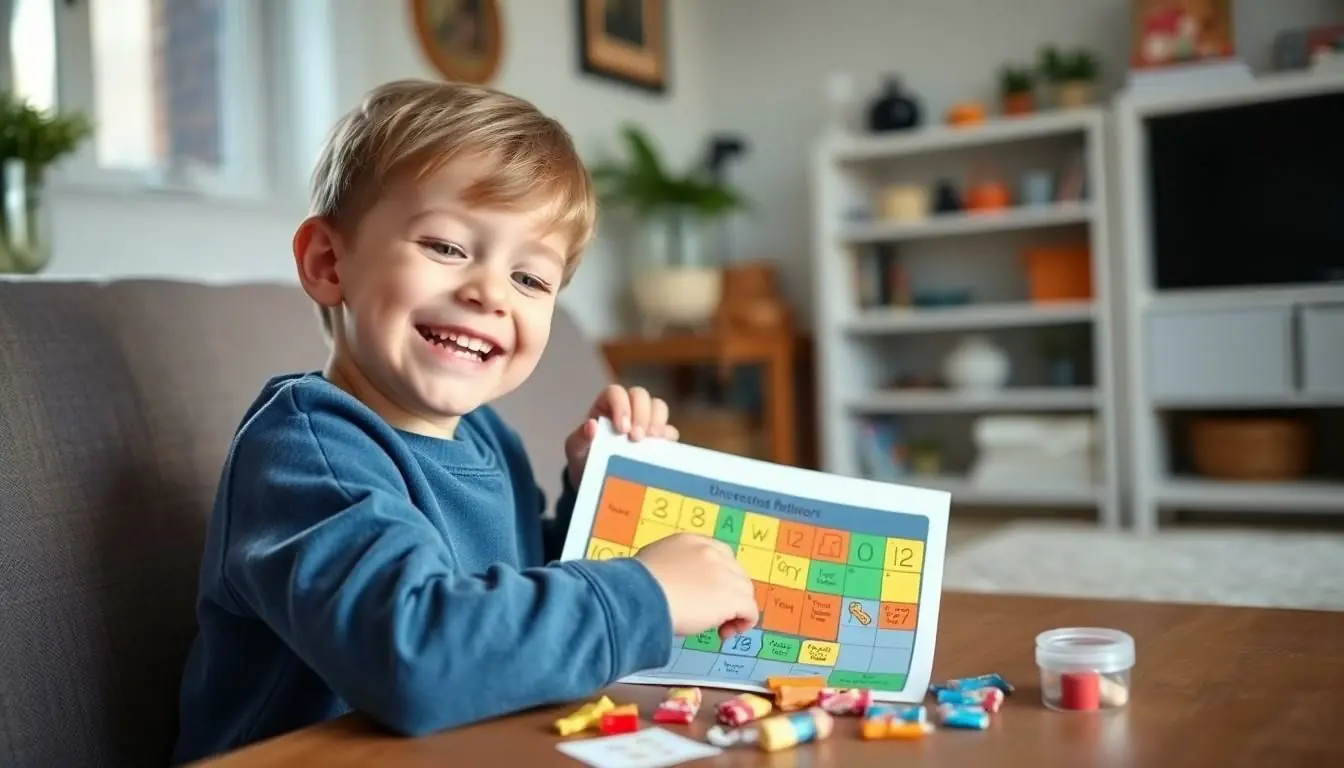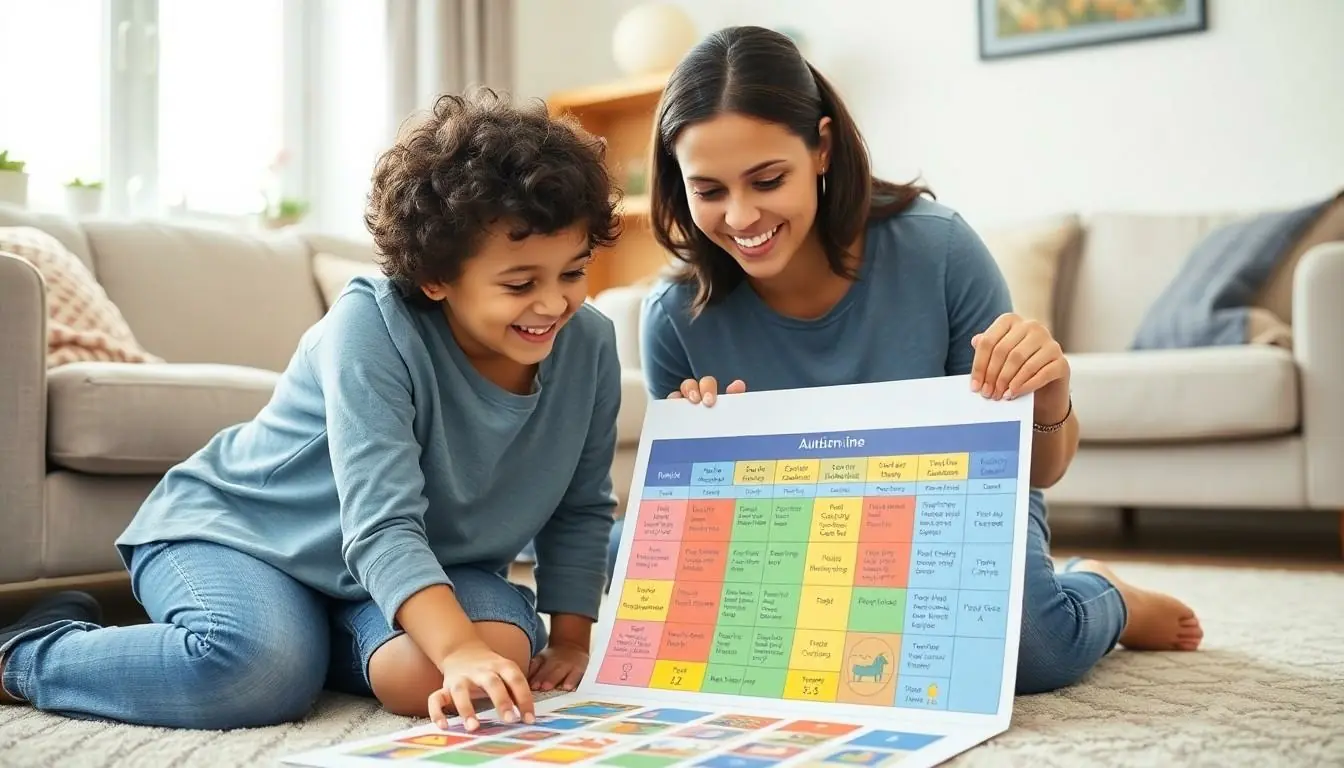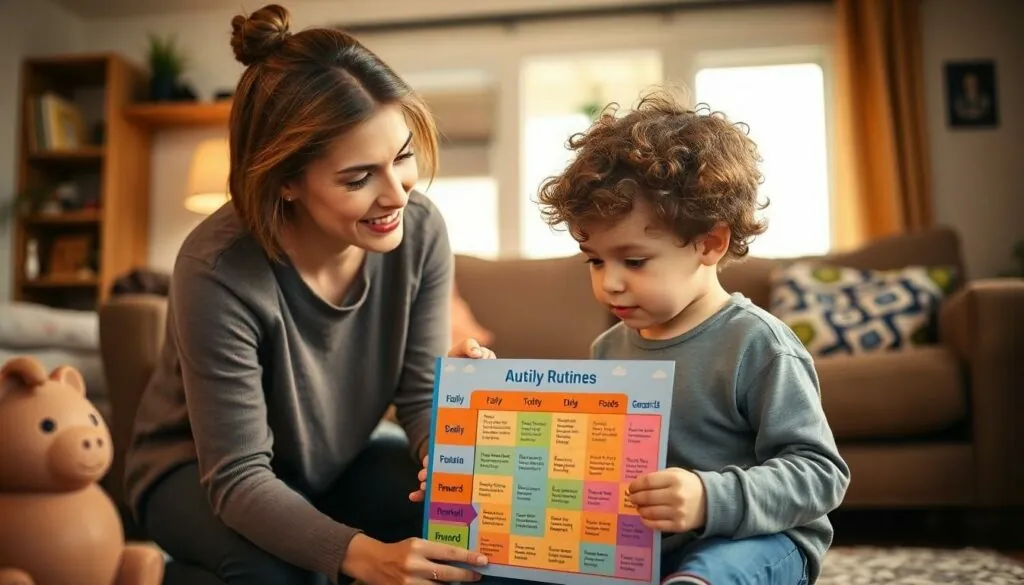Navigating the world of parenting can feel like trying to solve a Rubik’s Cube while riding a unicycle. When it comes to disciplining an autistic child who seems to have selective hearing, the challenge can feel even more daunting. But don’t worry—there’s hope and humor in the chaos.
Understanding how to effectively communicate and discipline is key. It’s not about cracking the whip; it’s about finding strategies that resonate. With a few tailored techniques, parents can turn those frustrating moments into opportunities for growth and connection. So grab your favorite snack, take a deep breath, and let’s dive into some practical approaches that’ll make both you and your child feel heard and understood.
Table of Contents
ToggleUnderstanding Autism and Communication
Understanding autism involves recognizing the unique behaviors and communication challenges that affect children on the spectrum. Communication can often feel overwhelming for both the child and the parent, making it essential to adapt strategies that work well in these situations.
The Unique Challenges of Autism
Autism presents distinct challenges that vary significantly from child to child. Sensory sensitivities may lead to heightened reactions to sounds, lights, or textures, causing discomfort during interactions. Social cues often go unrecognized, complicating attempts to engage in two-way communication. Additionally, each child has their own pacing for processing information, impacting their ability to respond promptly. Parents frequently face difficulties in discerning when a child is overwhelmed or simply distracted. Understanding these intricacies helps create an environment that promotes effective discipline techniques.
Communication Styles in Autistic Children
Communication styles in autistic children often differ from typical interactions. Many children express themselves through nonverbal means, including gestures, facial expressions, or pictures. Some prefer structured routines, responding better to visual supports that provide clear expectations. Others may excel in alternative communication methods like sign language or text-to-speech technology. Active listening becomes vital, as it encourages parents to observe and understand their child’s preferred form of expression. Adapting to these communication styles fosters a supportive environment where messages are conveyed clearly, improving connection and discipline effectiveness.
Effective Discipline Strategies


Effective discipline strategies focus on understanding the unique needs of autistic children. Emphasizing approaches that cater to individual strengths creates opportunities for growth.
Positive Reinforcement Techniques
Positive reinforcement encourages desired behaviors through rewards. Offering praise, small treats, or privileges reinforces appropriate responses. Parents can celebrate both small and large achievements to enhance motivation. Using visual charts can help track progress, providing clear visual cues. Implementing consistency in rewards strengthens the association between behaviors and outcomes. Tailoring reinforcement to personal interests ensures effectiveness.
Establishing Clear Rules and Routines
Clear rules provide structure, helping autistic children understand expectations. Written or visual schedules can clarify daily routines and behavioral guidelines. Consistency in applying these rules aids comprehension. Parents should communicate changes in advance to minimize anxiety. Incorporating specific, simple language helps convey rules precisely. Regularly reviewing and adapting the rules as needed ensures relevance. Creating a calm environment supports adherence to established routines.
Tailoring Discipline Approaches
Discipline strategies must align with the unique characteristics of an autistic child. Customizing these approaches increases their effectiveness.
Understanding Individual Needs and Triggers
Recognizing individual needs helps parents identify specific triggers for their child’s behaviors. Understanding sensory sensitivities can reveal when a child feels overwhelmed. Observation plays a crucial role; parents should note situations that prompt defiance or distraction. Emphasizing the child’s preferences in communication fosters better connections. Parents gain insight into unique responses by engaging in open dialogue about emotions. Tailoring conversations to these insights enables more effective discipline.
Creating a Structured Environment
Establishing a structured environment simplifies expectations for an autistic child. Consistent routines reduce anxiety and aid comprehension. Visual supports, such as charts or schedules, provide clarity on daily activities. Engaging the child in setting up routines promotes ownership and reduces resistance. Predictable arrangements help children anticipate changes and transitions. Parents should reinforce rules through regular reviews, ensuring clarity remains paramount. This structure, combined with clear communication, enhances overall discipline effectiveness.
Collaborating with Professionals
Collaborating with professionals offers essential support when disciplining an autistic child. Engaging experts can provide valuable insights and tailored strategies.
Seeking Guidance from Therapists
Consulting therapists enhances understanding of a child’s unique needs. Therapists can assess communication methods and behavioral patterns. Recommendations might involve specific techniques that parents can implement at home, ensuring consistency. They may also offer resources, such as social stories or visual aids, that help convey expectations clearly. Parents receive tools to address selective listening effectively, fostering improved interactions and responses.
Involving Educators in the Process
Working with educators strengthens discipline strategies in school settings. Teachers can share observations about behavior patterns that may differ from home. Collaborating on a behavioral plan ensures continuity between school and home environments. Creation of individualized support plans allows educators to adopt consistent approaches. Regular communication between parents and teachers helps monitor progress and adjusts strategies as needed. This partnership fosters a cohesive environment for the child, supporting overall development and learning.






